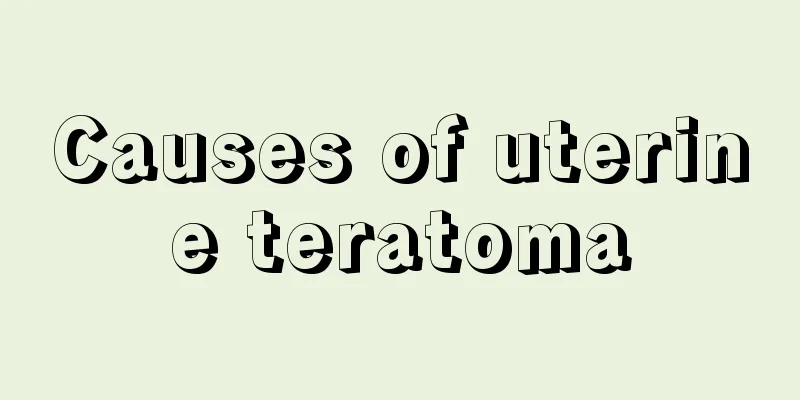Itch under the collarbone

|
If the symptom of itching under the collarbone is not accompanied by pain, it is most likely caused by an allergic reaction, because the characteristic of an allergic reaction is itching. However, it is difficult to determine the cause of the allergic reaction based on a single symptom. We need to understand the situation of the allergic reaction and make a judgment based on our own condition so that we can draw a preliminary conclusion. Let’s take a look at the characteristics of allergic reactions. Allergies often occur in a relatively fixed group of people because people with allergic constitutions have congenital immune dysfunction, which is often inherited. In other words, people with this constitution may suffer from allergies throughout their lives. Of course, people with allergic constitutions do not necessarily develop allergies. This is determined by the mechanism of allergies. When a person with an allergic constitution comes into contact with an allergen (antigen) for the first time, the body will not produce allergic symptoms, but the plasma cells in the body will produce a corresponding specific antibody. When this specific antibody accumulates to a certain amount, if it comes into contact with the antigen again, the specific antibody will combine with it, causing the body's mediator cells to degranulate and release a variety of mediators, thereby producing a series of allergic symptoms. It can be seen that there is a condition for the occurrence of allergies, which is that there must be repeated exposure to the same allergen. Knowing this, it is not difficult to understand why people who are allergic to certain pollen only suffer from allergies in spring and not in other seasons. This is because these flowers only bloom in spring and it is only possible to come into contact with their pollen in spring. Substances that cause allergic reactions are called allergens, such as pollen, indoor dust, fish, shrimp, milk, eggs, penicillin, sulfonamide, quinine, etc. When some people come into contact with allergens, antibodies are produced by effector B cells under the stimulation of allergens. Some antibodies attach to the surface of certain cells in the skin, the lining of the respiratory or digestive tract, and the blood. When the same allergen enters the body again, it will combine with the corresponding antibodies adsorbed on the cell surface, causing the above cells to release substances such as histamine, causing capillary dilation, increased blood vessel wall permeability, smooth muscle contraction and increased glandular secretion. If the above reactions occur on the skin, redness, swelling, urticaria, etc. will appear; if they occur in the digestive tract, vomiting, abdominal pain, diarrhea, etc. will appear. Some patients with severe conditions may die from bronchospasm, suffocation or anaphylactic shock. Clinical manifestations 1. Anaphylactic shock reaction: (1) Symptoms of respiratory obstruction: caused by laryngeal edema, tracheal and bronchial spasm, and pulmonary edema. Symptoms include chest tightness, palpitations, a feeling of blockage in the throat, difficulty breathing and flushed face, accompanied by a sense of danger, dry mouth, dizziness, and numbness of the face and limbs. (2) Symptoms of microcirculation disorders: caused by extensive dilation of microvessels. Symptoms include pale complexion, irritability, chills, cold sweats, weak pulse and low blood pressure. (3) Central nervous system symptoms: caused by brain hypoxia. Symptoms include loss of consciousness, coma, convulsions, and incontinence. (4) Allergic skin reactions: such as itching, urticaria and other various rashes. 2. Hematologic disease-like reactions. The differentiation of reaction types in this group depends mainly on changes in blood tests. The main symptoms include: granulocytopenia or deficiency, thrombocytopenia, aplastic anemia, hemolytic anemia and megaloblastic anemia. 3. Serum sickness-like reaction. The main reaction symptoms are serum sickness-like changes, and the common clinical manifestations are sudden widespread erythema and urticaria-like rash, which may be accompanied by fever, joint pain and lymphadenopathy. 4. Other systemic reactions. Most skin and mucous membrane rashes caused by drugs belong to this type. The clinical manifestations are varied. The common allergic drug eruptions include: fixed drug eruption, epidermolysis bullosa, exfoliative dermatitis drug eruption, eczematous dermatitis drug eruption, erythema multiforme and severe erythema multiforme drug eruption, photosensitivity drug eruption, etc. |
<<: How to relieve itching after tattoo
>>: Can eczema heal itself after scabbing?
Recommend
How to treat itchy butt crack?
I believe that many friends do not pay attention ...
Is microwave radiation strong?
We all use microwave ovens in the kitchen, and th...
What to do if Fengyoujing gets into your eyes
Menthol is extracted from mint and combined with ...
What to do if you have a cough caused by influenza
Influenza outbreaks occur frequently during the S...
Will eating fresh walnuts cause internal heat?
Fresh walnuts are a common food in our daily life...
Can advanced lung cancer infect humans?
Lung cancer in the late stage is not contagious. ...
How to treat acute enteritis and what are the treatment principles?
Inattention to diet, coupled with an unhealthy li...
The early symptoms of rectal cancer are mainly manifested in the following points
It is very important to know the early symptoms o...
The role and usage of fuel consumption
When we mix cold dishes, we need not only some co...
How to grow yew bonsai
There are many benefits to placing more yew bonsa...
Can melanoma kill people?
Will melanoma patients die? For most melanoma pat...
How to clean an electric baking pan
With the improvement of living standards, many sm...
Warm-up exercises before morning jogging
Morning jogging helps us improve our body's r...
What eye hygiene knowledge should be paid attention to
Nowadays, more and more people are suffering from...
The efficacy of sturgeon caviar extract
Sturgeon caviar sauce is made from the roe of stu...









